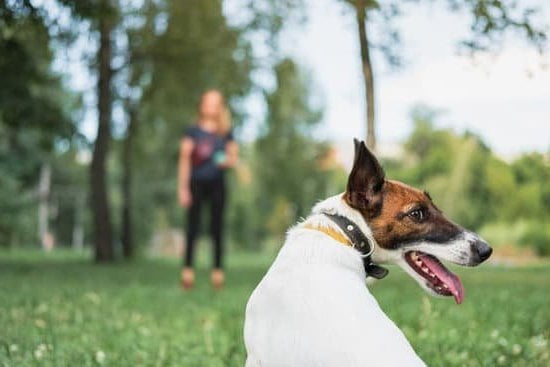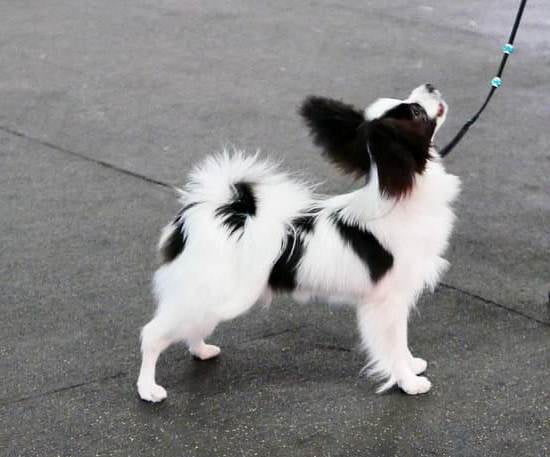Can Dogs Be Trained Not To Go Pee
In The House?
The answer to this question is a resounding yes! Dogs can be trained not to pee in the house, but it takes patience, consistency and, most importantly, positive reinforcement.
The first step in training your dog not to pee in the house is to create a designated potty area for them. This can be an outdoor space like a fenced-in yard or an indoor space like a designated corner of the room. Once you have determined your dog’s potty area, be sure to consistently take them there every time they need to go potty.
When your dog goes to the potty in the designated area, be sure to praise them enthusiastically and give them a treat. Over time, your dog will learn to associate going potty with positive reinforcement, and they will be less likely to pee in the house.
If you are consistent with your training, your dog should be able to stop peeing in the house within a few weeks. However, it is important to keep in mind that occasional accidents may still occur, and that’s okay! Just be sure to praise your dog for going potty in the correct spot and continue to reinforce the behavior with positive reinforcement.
Can An Adult Dog Be Trained
To Use A Toilet?
There is a lot of debate on whether or not it is possible to train an adult dog to use a toilet. Some people swear by it, while others claim it is not possible. There are a lot of different techniques that people use to try and train their dog to use the toilet, but the most common method is to place the dog over the toilet and wait for them to go.
There are a few things that you need to consider before you try to train your dog to use the toilet. The first is that not all dogs are able to be trained to do this. It is more difficult to train an adult dog to use the toilet than it is to train a puppy, so you need to be prepared for some challenges. The other thing to consider is that it takes a lot of time and patience to train a dog to use the toilet. You will need to be consistent and patient in order to see results.
If you are interested in trying to train your dog to use the toilet, there are a few things that you can do to increase your chances of success. The first is to make sure that you are providing your dog with plenty of opportunities to go to the bathroom. This means taking them outside frequently, and providing them with access to a designated bathroom area. The second is to be patient and consistent with your training. This can be difficult, but it is important to stay motivated and keep trying.
There are a lot of benefits to training your dog to use the toilet. It can be a lot more convenient for both you and your dog, and it can help to reduce the amount of messes that you have to clean up. It is also a good way to help your dog learn to be independent and to use the bathroom in an appropriate place.
Can Dogs Be Trained At Any Age
?
The answer to this question is yes, dogs can be trained at any age. However, the younger the dog is when you start training, the easier it will be to train them. Dogs are very intelligent animals and they are capable of learning new things at any age, but the earlier you start training them, the more successful your training will be.
One of the most important things to remember when training a dog is to be consistent. You need to be consistent with your commands, your rewards, and your punishments. If you are inconsistent, your dog will not know what is expected of them and they will not be able to successfully learn the desired behavior.
It is also important to be patient when training a dog. Dogs learn at their own pace and you cannot expect them to learn everything overnight. Be patient and keep rewarding them for good behavior and eventually they will learn the behaviors you are trying to teach them.
If you are consistent, patient, and use positive reinforcement, you can successfully train your dog at any age.
Can A Dog Be Crate Trained At 1 Year Old
Many people believe that crate training a dog is an appropriate way to housetrain a dog, and that it can be started at any age. However, there is a lot of debate about when is the best time to crate train a dog. Some people believe that crate training a dog should start when the dog is a puppy, while others believe that crate training can be started at any age.
The truth is that crate training can be started at any age, but it may not be as effective if started later in life. Puppies are easier to train because they are still in the developmental stage and are more willing to accept new things. Older dogs may be more resistant to crate training, but it is still possible to train them.
The most important thing when crate training a dog is to be consistent. You need to make sure that the dog is always put in the crate when it is not being supervised, and that it is only allowed out of the crate when it has been properly trained. If you are not consistent with the crate training, the dog will not learn what is expected of it.
If you are considering crate training your dog, it is best to start as early as possible. However, if you have an older dog that has not been crate trained, it is not too late to start. Be patient and consistent with the training, and your dog will eventually learn what is expected of it.
Can A Dog Be Crate Trained At Any Age
?
Yes, a dog can be crate trained at any age. However, the younger the dog is when crate training begins, the easier it will be for the dog to learn to love and appreciate the crate as a place of refuge and relaxation.
Many people mistakenly believe that crates are only for puppies, but dogs of all ages can benefit from crate training. Older dogs may take a little longer to get used to the crate, but with patience and persistence, they can learn to enjoy it as well.
The key to successful crate training is making sure that the dog views the crate as a positive place. You can do this by associating the crate with good things, such as treats and positive reinforcement.
If you are crate training an older dog, start by putting the crate in a quiet, comfortable spot in the house. Make sure the dog has plenty of water and access to food. Gradually increase the amount of time the dog spends in the crate, and make sure to give the dog plenty of praise when he or she relaxes in the crate.
Crate training can be a great way to help your dog feel safe and secure, and it can be a valuable tool for house training. With patience and persistence, any dog can learn to love and appreciate the crate.

Welcome to the blog! I am a professional dog trainer and have been working with dogs for many years. In this blog, I will be discussing various topics related to dog training, including tips, tricks, and advice. I hope you find this information helpful and informative. Thanks for reading!





